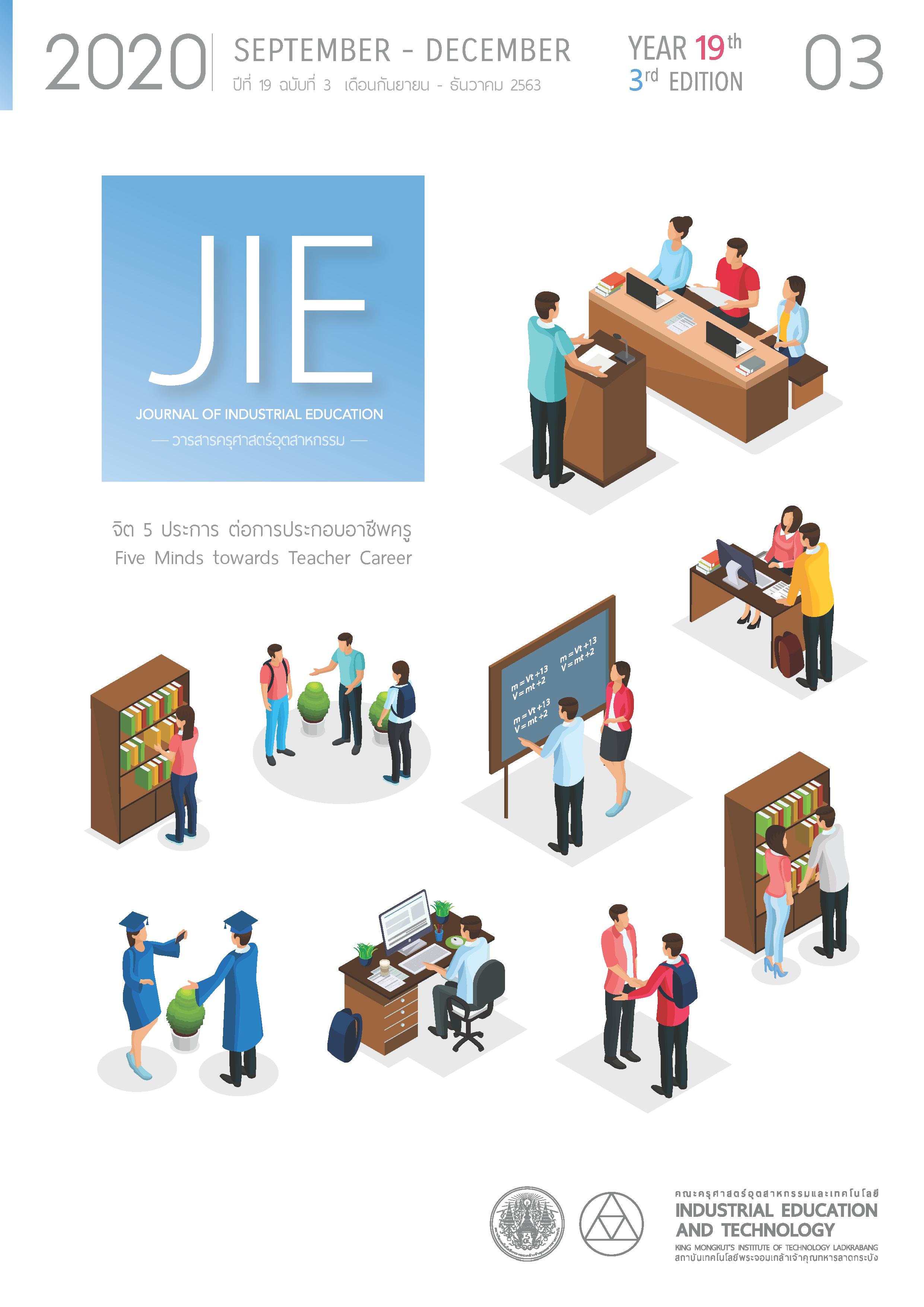A STUDY OF IDENTITY IN THE PAKHAYO ETHNIC GROUP FOR CLOTHES DESIGN
Keywords:
Identity, Pakhayo ethic group, Clothes, PatternsAbstract
The study aimed to examine the identity of the Pakakayo ethnic group with the practical applications for clothes design. The research objectives were thus 1) to study the Pakakayo ethnic identity for product design 2) to design products from the Pakakayo ethnic identity and 3) Evaluate satisfaction of consumer. The data on the Pakakayo ethnic identity were collected from the experts as well and the luminaries in the community areas. Then, the data obtained were analyzed and the Pakakayo ethnic identity derived from such data was applied as a guideline to design products. In the present research study, community-based research methods were used to analyze and select the product patterns, as well as to process the production. The research results showed that the Pakakayo ethnic group had seven unique characteristics, namely, 1) languages, 2) food, 3) traditions, 4) architecture, 5) jewelry, 6) clothes, and 7) musical instruments. From the analysis, it can be concluded that the clothes of the Pakakayo ethnic group could create a clear appeal from the cultural identity, and this could make a good impression for those who had seen them. The clothes of the Pakakayo ethnic group played a role as a means which helped portray the history, traditions, culture, customs, and ways of life, particularly ancient patterns, of the ethnic clothing. The twelve patterns were: 1) the Ta Ko Lae pattern, 2) the Se Kle pattern, 3) the Tar Ming Kli pattern, 4) the Ta Sor Tor pattern, 5) the Ber Ka Kor pattern, 6) the Ta Sue Rong pattern, 7) the Per Doh pattern, 8) the Tue Di pattern, 9) the Chui Kor Lor pattern, 10) the Sa Kor Por pattern, 11) the Ta Kae Kor pattern, and 12) the Thou Li knocked pattern. The creative techniques used by the Pakakayo ethnic group ranged from discontinuous supplementary weft, twill and satin weaves, weft ikat, embroidery with colorful threads or yarns, decoration with beads – seeds of Job’s tears. These techniques were suitable for designing products which included shirts, pants, dresses, and bags. Also, the identity of the Pakakayo ethnic group was blended as part of the design of each product in order to maintain the primitive form, which was in accordance with the original concepts of the Pakakayo ethnic group
Summary found that format 1 is most suitable. there is a high level of opinion ( = 4.27, S.D.= 0.67). Next is format 3 is suitable to a large extent (
= 3.82, S.D.= 0.83). Last is format 2 is suitable to a large extent (
= 3.67, S.D.= 0.84).
Working consumer 30 persons in BANGKOK. Using accidental sampling selection. There is a high level of satisfaction. 1) Product. The beauty of the product in shape ( = 4.67, S.D.= 0.61). The product is unique (
= 4.70, S.D.= 0.65). The product is suitable for use (
= 4.67, S.D.= 0.48). 2) Price. Price is right for the product (
= 4.30, S.D.= 0.53). The price is reasonable compared to the quality (
= 4.57, S.D.= 0.50). The price is reasonable compared to the features (
= 4.43, S.D.= 0.73). 3) Distribution Products. Can be sold at trade shows (
= 4.60, S.D.= 0.56). The products are sold online (
= 4.83, S.D.= 0.38). 4) Marketing promotion. There is a product delivery service (
= 4.67, S.D.= 0.61). There is a public relations of products in various fields (
= 4.10, S.D.= 0.66). There is an incentive to buy a variety of products (
= 3.97, S.D.= 0.81).
References
Arts and crafts international center. (2014). Uniqueness and art of hill tribe fabric patterns. 1st ed. Phra Nakhon Sri Ayutthaya: Siam Color Print. 15-22.
Ployharnkan, K. (2019). Interview, February 1.
Leesuwan, W. (1999). Local arts and crafts. Bangkok: Compact Print. 122-123.
Bono, E. D. (2004). Side thinking: English and Thai. Translated by Yuda Rakthai. Bangkok: Expert Net. 43-68.
Yodbangtoei, M. (1995). Design. 1st ed. Bangkok: Odeon Store. 72-73.
Siriwan, S., Prin, l., Suporn, S., & Ongart, P. (1998). Marketing strategy and marketing management. 1st ed. Bangkok: Diamond in Business Network. 80.
Art league centre of thailand. (2540). CRIES FROM THE HILLS. Bangkok: Silpasiam. 1-6.
Pawanrak (Alias). (2006). KAREN WEAVING. Vol 2. Lamphun: Lumphun Primary Educationnal Service Area office 2. 1-19.
Downloads
Published
How to Cite
Issue
Section
License
"The opinions and contents including the words in papers are responsibility by the authors."
"ข้อคิดเห็น เนื้อหา รวมทั้งการใช้ภาษาในบทความถือเป็นความรับผิดชอบของผู้เขียน"



